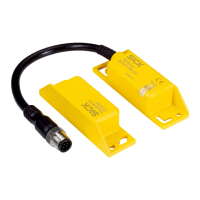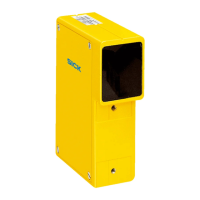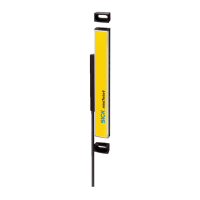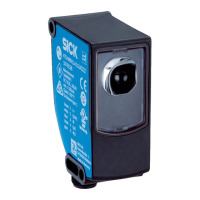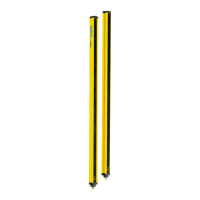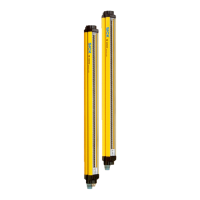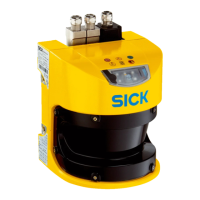Figure 16: Protection against reaching over with high scan plane (dimensions in mm)
The necessary supplement to the minimum distance depends on the height of the pro‐
tective field’s scan plane. With a low scan plane, the supplement is greater than with a
high scan plane.
Calculating the supplement C
b
If t
here is sufficient space in front of the hazardous area, use C = 1,200 mm.
b
If the minimum distance should be as small as possible, calculate C using the fol‐
lowing formula:
C = 1,200 mm – (0.4 × H
D
)
where:
°
H
D
= hei
ght of the protective field above the floor in millimeters (mm).
✓
If the result is C ≥ 850 mm, then use the calculated value as supplement C.
✓
If the result is C < 850 mm, then use C = 850 mm (this value corresponds to an
arm’s length and is valid as a minimum supplement to protect against reaching
over).
4.3.7.3 Calculation example for the minimum distance
Calculation example of the minimum distance S according to ISO 13855
T
he example shows the calculation of the minimum distance S for parallel approach to
the protective field. A different calculation may be required, depending on the applica‐
tion and the ambient conditions (e.g. for a protective field orthogonal to or at any angle
to the direction of approach or an indirect approach).
S = 1,600 mm/s × T + TZ + Z
R
+ C
where:
•
S = minimum distance in millimeters (mm)
•
T = stopping/run-down time for the entire system in seconds (s)
(Response time of the safety laser scanner + machine’s stopping/run-down time,
incl. response time of the machine’s control system and signal propagation time)
•
T
Z = tolerance range of the safety laser scanner, see "Data sheet", page 111
4 P
ROJECT PLANNING
26
O P E R A T I N G I N S T R U C T I O N S | nanoScan3 I/O 8024596/15VP/2019-11-15 | SICK
Subject to change without notice

